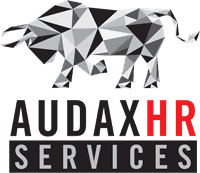In the past few years, there’s been an explosion of employers – of all sizes and from all business sectors – looking to start wellness programs to contain their long-term health costs. And when wellness programs are conceived and carried out properly, they’ve been proven to get results.
But here’s the key component for a successful wellness program: It will succeed or fail based on how thoroughly it’s planned and how well it’s communicated to employees on an ongoing basis.
Studies have shown about 75 cents of every dollar spent on healthcare is spent on treatment of a preventable illness. And that’s cause for optimism.
Why? Because if we can get our employees to think a little bit differently about the way they eat, exercise and, in general, manage their daily lives from a health perspective, there’s enormous potential for cost savings. That’s where a wellness program comes in.
In order for a wellness investment to be money well spent, you have to know what’s driving your biggest claim costs on your healthcare plan and go from there.
TAILORING YOUR PROGRAM
So, what sets a successful wellness program apart from one that throws good money after bad? It’s tailoring the program to meet your company’s needs.
To have a chance at success, you can’t guess at the problems your employees are having. That means you – or a third-party your company hires – must have the capacity to drill down into your claim data.
A crucial first step for finding your health cost drivers (obesity, high blood pressure, etc.) is to have employees undergo a health risk assessment – one that is compliant with HIPAA, GINA and ADA. The results of these assessments help you get a feel for what your employees’ baseline physical problems are before you try to design a program around them.
To truly get to the root of employee’s health problems, you’ll need access to detailed data from a variety of areas:
- your organization’s medical-claims breakdown for the past three years
- prescription-drug claims
- employee absence information
- EAP use disability claims, and
- employee demographics (your employees’ ethnic, gender and age breakdown points to greater – and lesser – health risks associated with each category).
Make no mistake: It takes some time and costs money to explore each of these avenues in addition to having employees undergo health risk assessments. But it’s worth it.
Here’s an example of the payoff: A company in Kansas City was approached by a health insurance carrier that offered – at a discounted cost of $75,000 a year – to roll out a four-pronged wellness program to deal with any employee with heart disease, diabetes, obesity, and/or smoking. But after the company dug into its healthcare plan claim data, it learned it already had claims that were below the national benchmarks in three of those four areas the wellness program would cover. The company avoided wasting $75,000 on a program that didn’t suit its needs.
Read more on HRMorning.com



